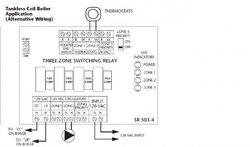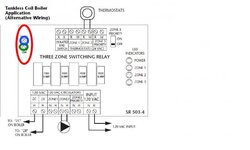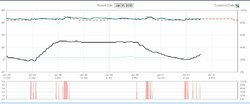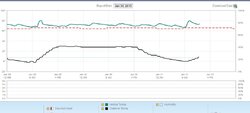So I ran new thermostat wire for my soon to arrive Ecobee, needed a 24V C wire... So now I have it, all plugged in and powering my old thermostat... or so I thought... I decided to test it today to see how well it works and when I pulled out the batteries the thermostat would not work when I plugged it back to the base plate...
Here is what I know..
I have a Taco SR503 See image attached.. you will see there is one area for 24v connections (upper left corner) and there are 2 connections available. When I check voltage across the TOP 24v to the Rh (as recommended in the the Ecobee install manual) on the controller I get nothing.. when I check voltage across the Bottom 24v to the Rh on the controller I get 30v.
Now neither of these values are 24v albeit the 30v is closer... so 6v difference I would think would be ok with the Ecobee, the house power fluctuates more than that and everything else runs fine. But any ideas why the top connection is a no go? I have checked the documentation for the Taco SR503 and found little help...
I have switched the wire from the top to the bottom and it powers the existing thermostat perfectly. So all should be good? Maybe?
Here is what I know..
I have a Taco SR503 See image attached.. you will see there is one area for 24v connections (upper left corner) and there are 2 connections available. When I check voltage across the TOP 24v to the Rh (as recommended in the the Ecobee install manual) on the controller I get nothing.. when I check voltage across the Bottom 24v to the Rh on the controller I get 30v.
Now neither of these values are 24v albeit the 30v is closer... so 6v difference I would think would be ok with the Ecobee, the house power fluctuates more than that and everything else runs fine. But any ideas why the top connection is a no go? I have checked the documentation for the Taco SR503 and found little help...
I have switched the wire from the top to the bottom and it powers the existing thermostat perfectly. So all should be good? Maybe?




 and apparently the 30v at the 24v common is no big deal (per Taco) so bring on the new toys.. err.. tools...
and apparently the 30v at the 24v common is no big deal (per Taco) so bring on the new toys.. err.. tools...
